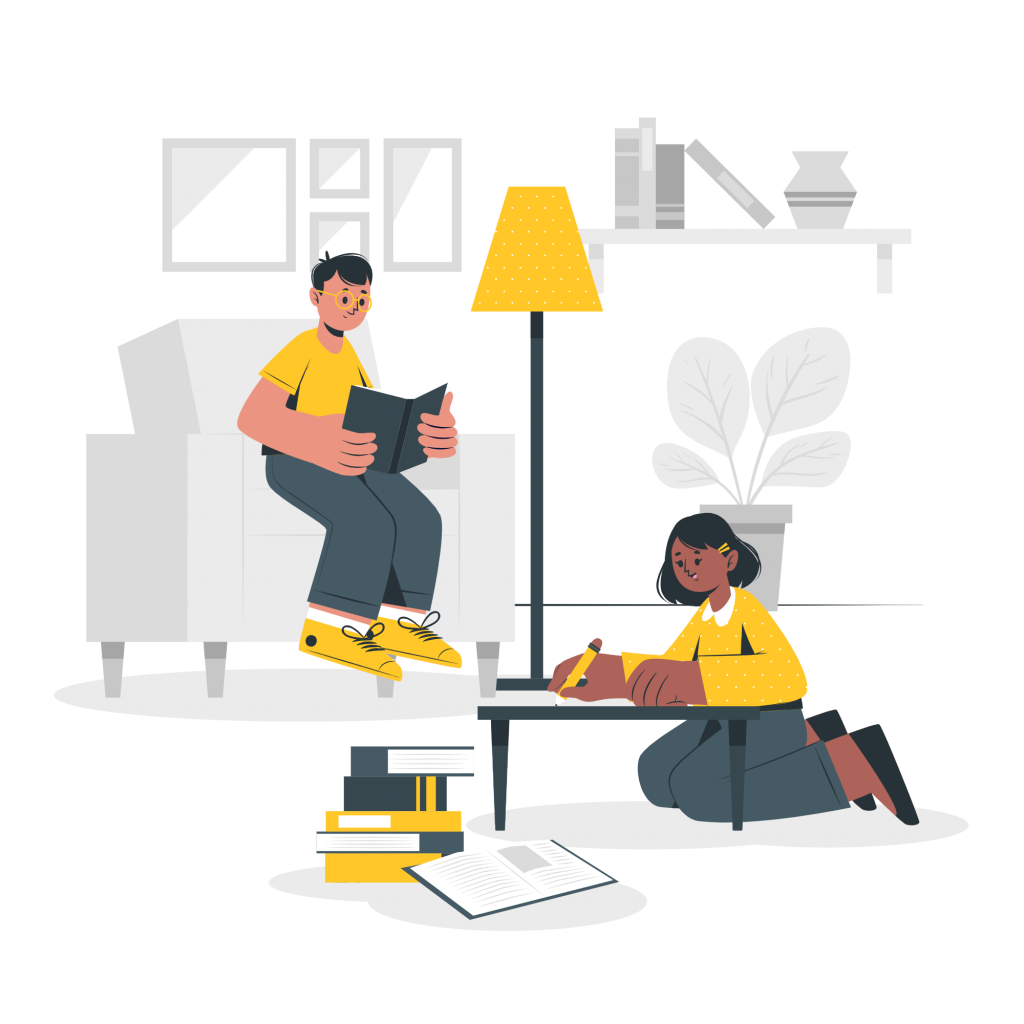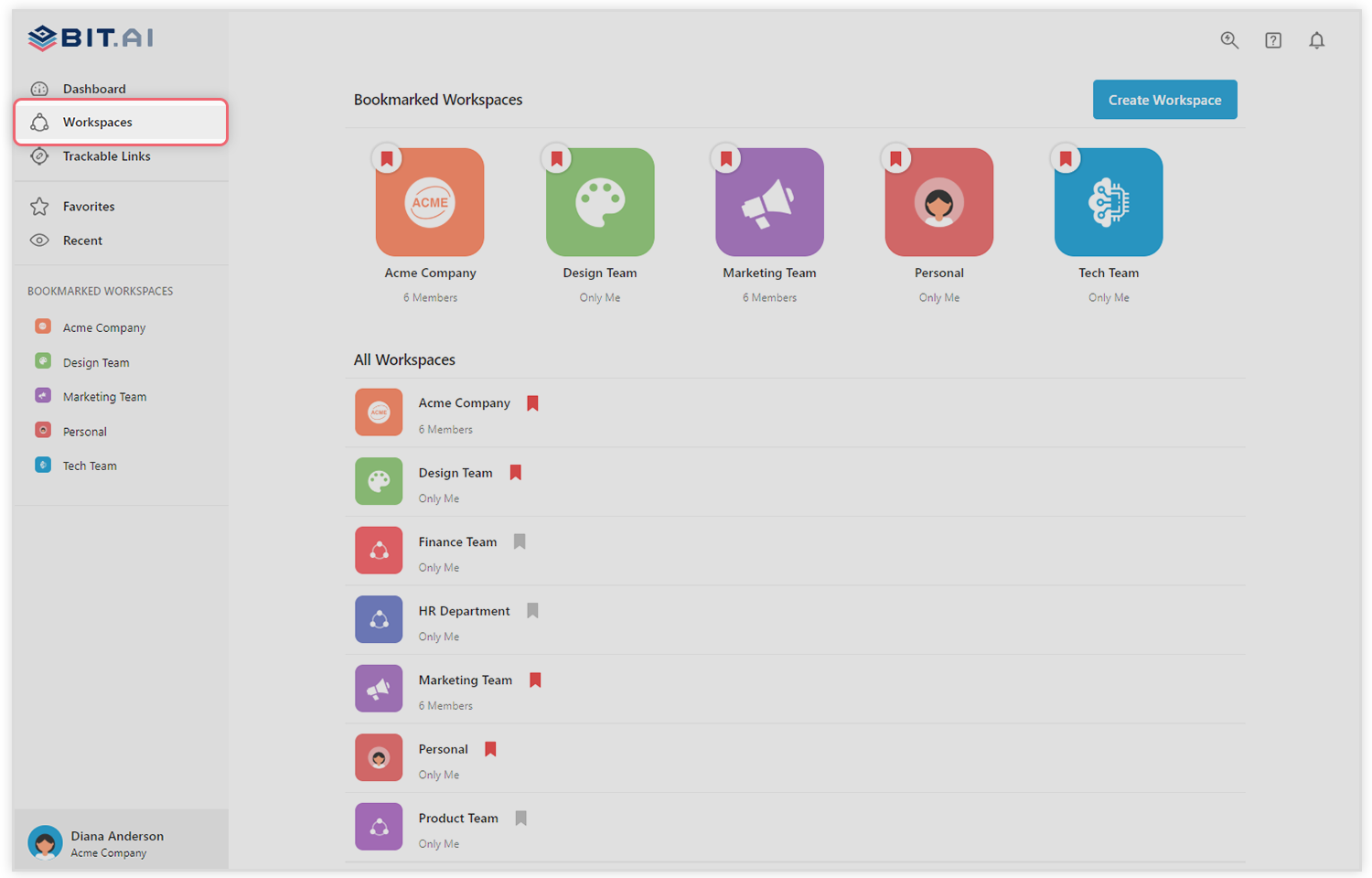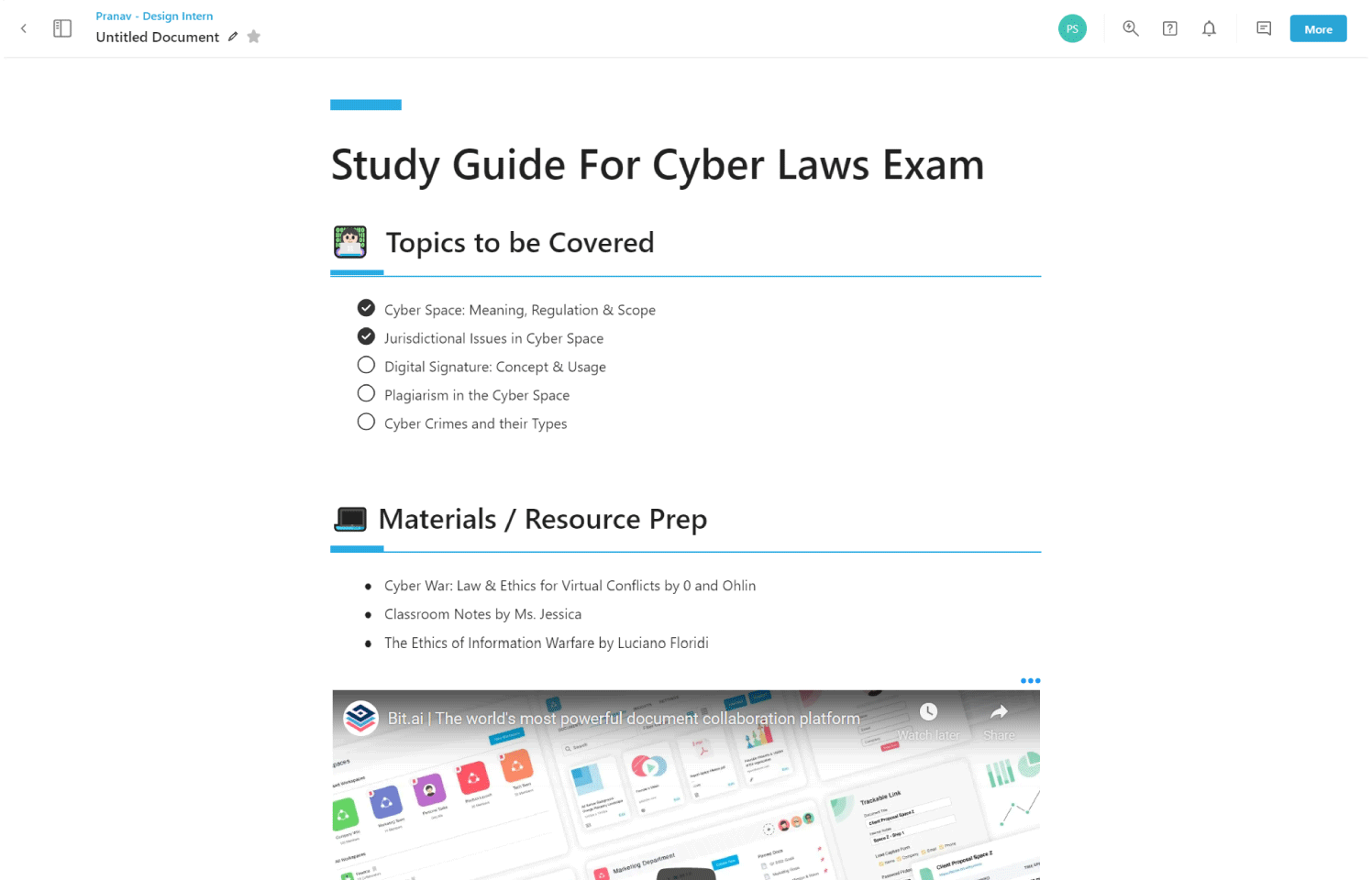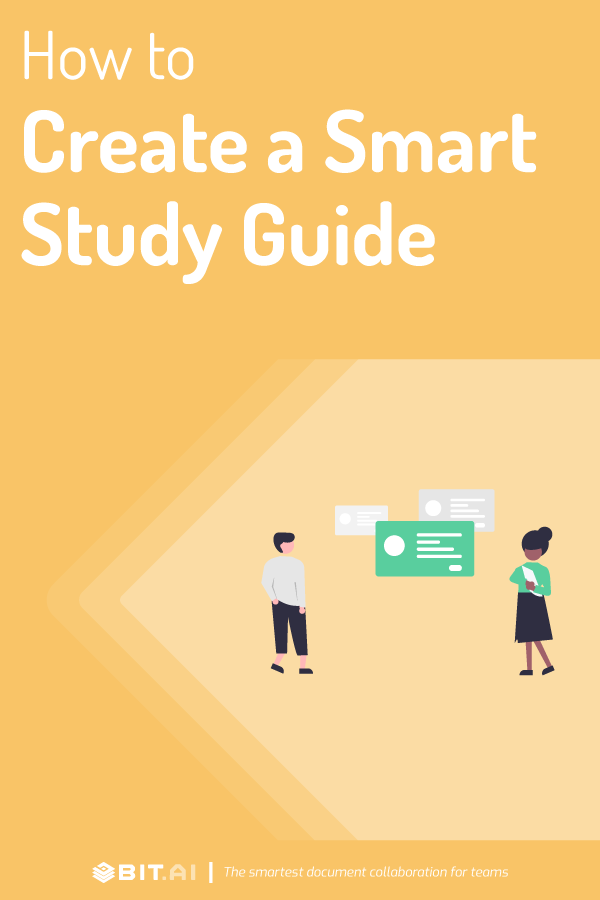Your life is all sunshine and rainbows.
All of a sudden, you get one resounding slap on your face and everything turns hazy.
That’s exactly what exams feel like, especially for students who ignore their textbooks the entire year.
The race to cram a year’s worth of syllabus in a few days is a nightmare, making even the bravest and strongest of people fall on our knees and cry.
There is just so much to learn, keep organized, and remember while preparing for an exam.
So what if we tell you that there’s an easy, effective, tried, and tested way to get the best grade possible, other than barricading yourself in the library?
Well, we scoured our brains and the internet for the best study method and it’s…*drumroll*…a study guide!
A Study Guide? What on Earth is That? (Definition)
Every test has a specific set of topics that student needs to learn in order to prepare for their exam, right?
A study guide condenses all those topics into a single source of information.
Simply put, a study guide is your personalized collection of the most important content displayed in a clear and concise manner, making it easier for you to study multiple topics at once.
In your study guide, you can write an outline of each chapter with key points, a chronological timeline for subjects like History, a concept map giving a visual of the most important things, flashcards, tests, and much more.

You can use your classroom notes, reading assignments, and homework assignments to write your study guide.
Umm…What’s so Great About Study Guides?
A study by the researchers at Stanford found that when college students apply a strategic approach to studying, they can certainly improve their exam scores.
A study guide is exactly that – a strategic and effective approach to prepare for an exam.
Whether you have got a weekly test or a final exam coping up, a study guide helps you figure out things you already know and things you need to study.
It helps you focus your efforts on the material you still haven’t learned, review things that are most likely to show up on your exam, and master every subject you tackle.
Study guides can help you not only remember information for longer but also spend less time studying while still reaping all the benefits.
In a perfect world, your teacher would give you a study guide for every quiz, test, and exam.
Unfortunately, we don’t live in a perfect world.
If your teacher doesn’t give you a study guide, it’s time to come to your own rescue and create your own.
Yes, make your own study guide because we’ve something that’ll help you with that!
Read more: 12 Best Student Tools for Better Learning in 2022
How to Create a Study Guide that Actually Helps
1. Change your Perspective a Little
Yes, a study guide sounds simple and straightforward.
However, many students misunderstand and underestimate it.
If you’re one of those with the perception that study guides are simply the answers to a test, it’s time to burst that bubble.
If you want to get the most of your study guide, start thinking of them as “questions” for the test, not the answers.
This simple shift in your perspective will make a huge impact on how you prepare yourself for your exams!
2. Know your Learning Style
How do you learn best?
If you remember things better by seeing, then include images, pictures, and visual aids in your study guides.
If you learn best through learning, record the lectures of your teachers, and so on.
The point being, customize your study guide to fit your learning style and studying routine!
3. Review your Material
Do you know what’s the best part about study guides?
Making a study guide is kind of like studying too because it’s a way of carefully reviewing all the material for your test or exam!
So skim carefully through your textbook, any notes you might have taken, PowerPoint presentations – basically anything that you might have seen in class, and create your study guide.
4. Embrace the Power of Visuals
We’d like to begin with some stats.
- Our brains process visuals 60,000 times faster than text.
- 80% of people remember what they see, compared to 20 percent of what they read.
- It takes only 13 milliseconds for the human brain to process an image.
The bottom line is, start creating concept maps, Venn diagrams, graphs, charts for your study guide.
This will help you understand and comprehend the information quickly and easily.
Read more: Student Collaboration: What, Why, and Tools!
5. Paraphrase, Paraphrase, Paraphrase

Don’t copy everything that’s written in the textbook.
You’re more likely to remember your own language and phrases so swap out technical terms for simpler ones, cut out some details, and rearrange the order of information in the paragraph.
When it’s time to take the exam and you have to explain a term or theory, your own words will come back to you faster, and what could be better than that?
Do’s & Don’ts: Craft Your Perfect Study Guide
Do:
- Know your learning style: Visual learners should incorporate charts, graphs, and mind maps. Auditory learners can benefit from recordings. Kinesthetic learners might prefer practice problems and flashcards.
- Personalize it!: Don’t just copy the textbook. Rephrase information in your own words, focus on key concepts, and add details that resonate with you
- Chunk information: Break down large topics into manageable sections. This will make studying less overwhelming and help you retain information better.
- Incorporate practice questions: Include questions from past exams, quizzes, or your textbook to test your understanding and identify areas needing improvement.
- Schedule study sessions: Set aside dedicated time slots for studying with your guide. Consistency is key!
Don’t:
- Overload your guide: Focus on the most important information. Cramming too much detail can be counterproductive.
- Procrastinate: Don’t wait until the last minute to create your study guide. The sooner you start, the more effective it will be.
- Rely solely on your guide: While a great study tool, don’t neglect other resources like lectures, class discussions, or group study.
- Forget about breaks: Schedule short breaks during your study sessions to avoid burnout and boost focus.
- Ignore mistakes: View errors on practice questions as learning opportunities. Analyze them and adjust your understanding accordingly.
Bit.ai – The Ultimate Tool for Creating Study Guides
Bit.ai has simplified the intimidating process of consolidating all of the information into one helpful guide.

Using Bit will bring happiness into your study routine, while also making your study guides a hundred times more effective!
Don’t believe us? Check out all these mind-blowing features of Bit!
1. Organized Workspaces and Folders: From textbooks to classroom assignments, there is just so much to go through while creating a study guide, right? On Bit, you can create and neatly organize all this study material in workspaces and folders! You can create as many workspaces as you want.

2. Real-time Collaboration: The benefits of studying with others are endless. You get to better understand the topic if you discuss it with others. You can also ask others to review your study guides, classroom notes and simply ask a question if something isn’t clear.
The best part? Bit.ai gives you a space for that! On Bit, you can add a friend, classmate, teacher to your workspace and work together in real-time on your study guides and other documents using @mentions and highlight features.

3. Rich Embed: From Word Files & PDFs to YouTube Videos, teachers send a lot of reading material every day. What if we tell you that you can embed all this reading material in your document and enhance your learning experience?
Yes! Bit.ai integrates with more than 100 applications (Ex: Word Files, Google sheets, Microsoft Onedrive, YouTube, PDFs, LucidChart, etc.) to help you create media-rich and interactive study guides or any other document for that matter! You can even add tables, code blocks, math equations to your bit docs.
4. Smart Search: We’re sure you don’t want to go through the pain of searching for your important study material. Preparing for an exam is enough pain already.
Don’t worry, Bit.ai has got you covered. It has a ‘smart search’ feature that allows you to quickly find text in a body, folders, files, documents, and content across all of your workspaces.

6. Beautiful Templates & Sleek Editor: No, your study guide doesn’t have to look like a boring document. Bit offers design automation which makes every document that you create eye-catching. That’s not it!
Your study guide certainly needs all your attention and that’s why Bit also offers a minimal and distraction-free editor. We’re sure you’re impressed. You will also get an automated table of content based on your headers and subheaders for easy navigation without having to scroll endlessly.

Before you go!
Our team at bit.ai has created a few awesome education templates to make your processes more efficient. Make sure to check them out before you go, you might need them!
- Class Notes Template
- Lesson Plan Template
- Letter of Recommendation Template
- Recommended Reading Template
- Research Paper Template
- Thesis Template
- Checklist Template
- To-Do List Template
- White Paper Template
- eBook Template
Wrapping Up
For most people, the experience of studying for an exam can be described in one word: panic.
Everyone vividly remembers that nauseating feeling that creeps in right after realizing that exams are near.
Well, no matter how much you despise exams, it would never change the fact that exams are a part and parcel of education.
Just look on the bright side: exams actually do more than just show your teacher what you know. They help you learn.
So, scratch the dust off your textbooks, assemble your pens, locate your highlighter collection and get to work.
We know you will fearlessly triumph over all the exams and tests that come your way. We’re rooting for you!
Further reads:
How To Write A Case Study (With Template)
9 Awesome Assignment Writing Tips to Get Better Marks!
Best Homeschooling Apps and Tools to Educate Kids!
How To Create Effective Lesson plans For Students?
How to Write a Thesis with Perfection?
Learning Objectives: What, Why & How to Write?
Scientific Paper: What is it & How to Write it? (Steps and Format)
Cornell Note-Taking: What is it and How to Do it?



